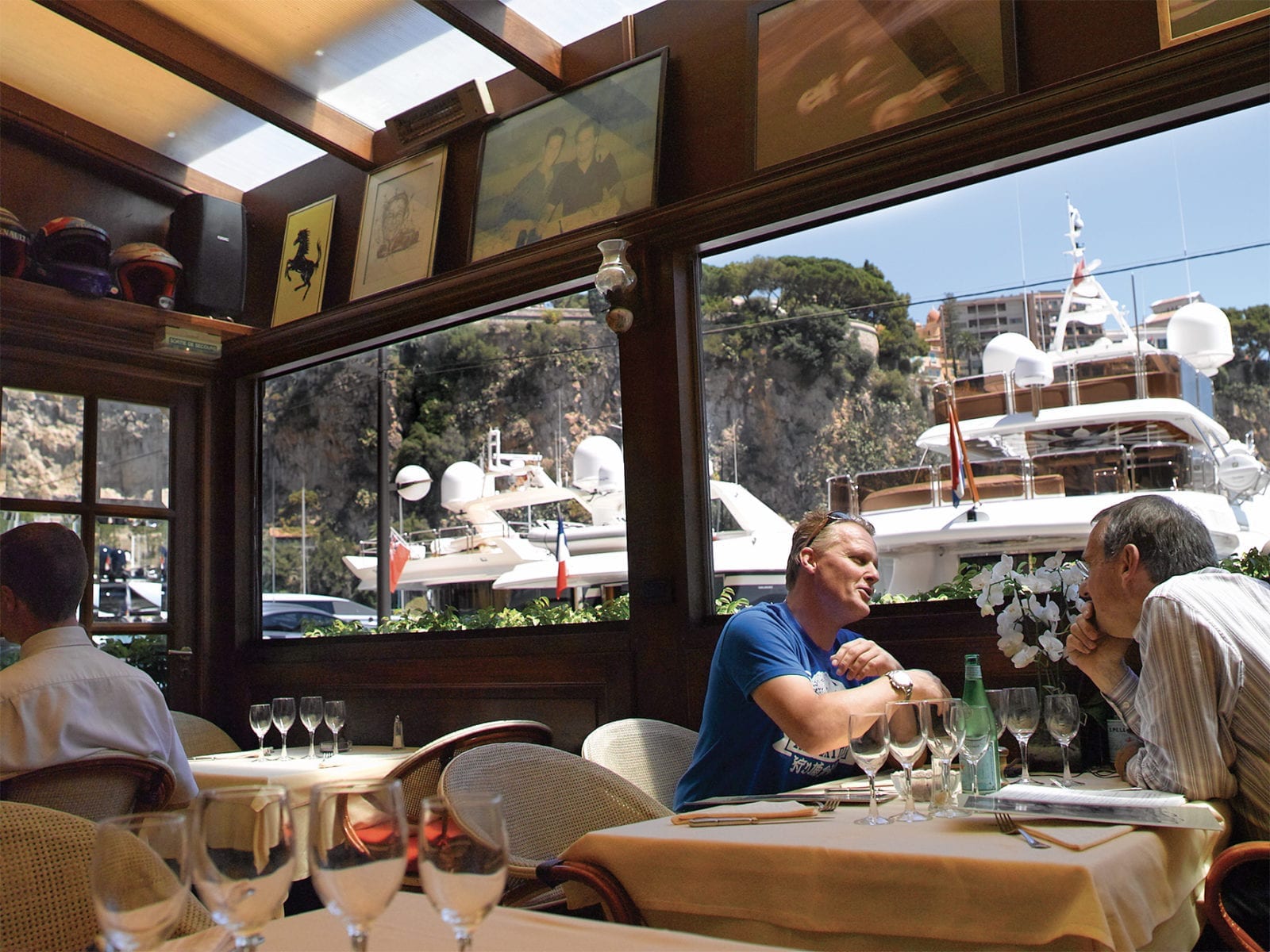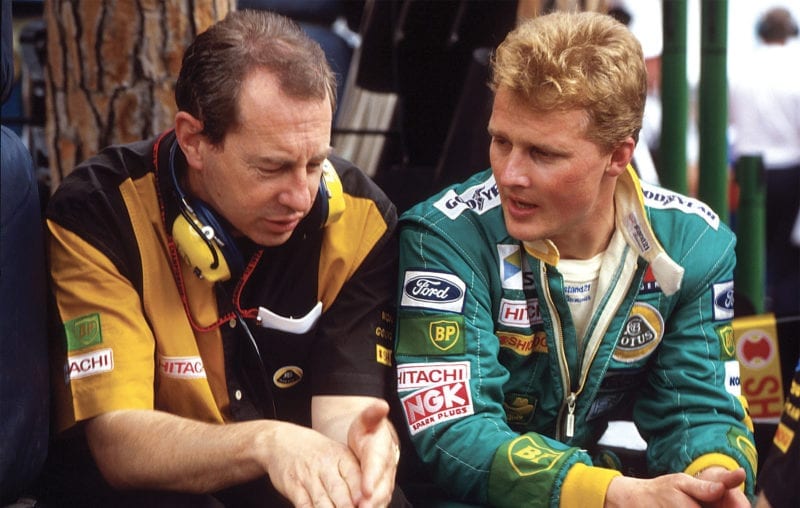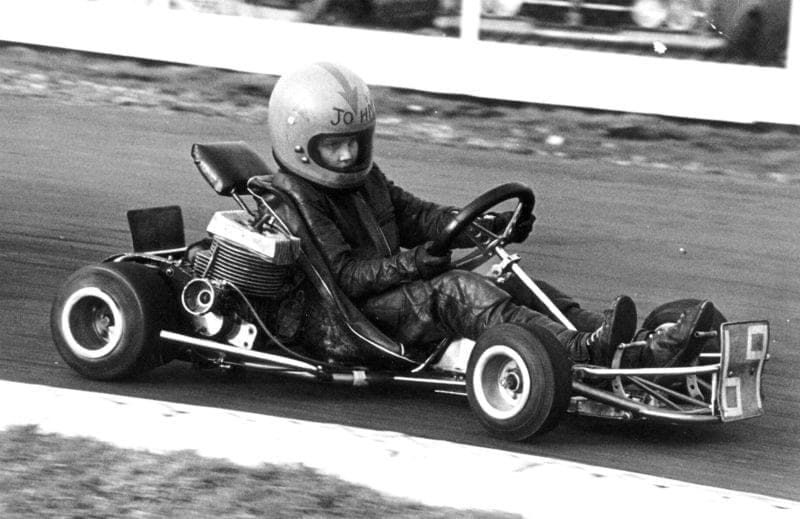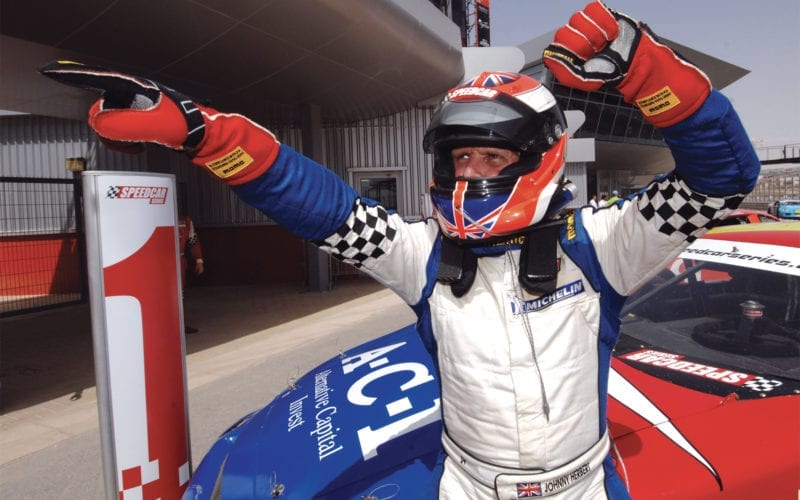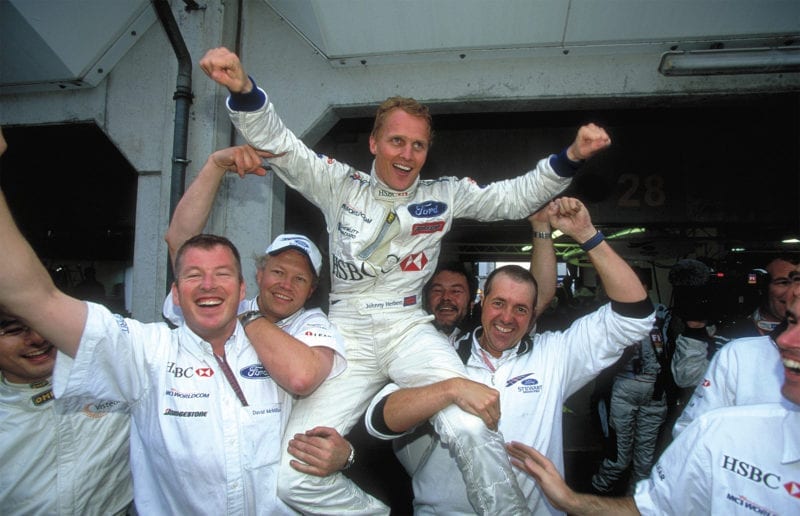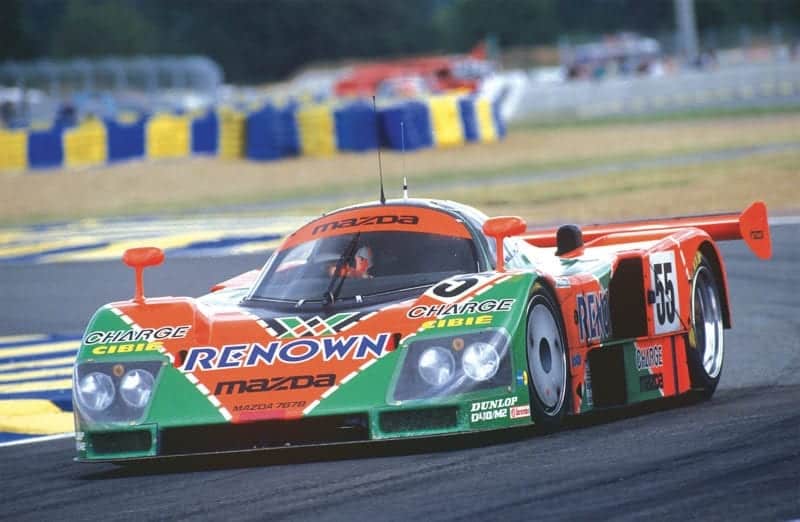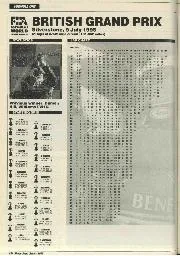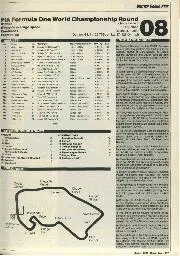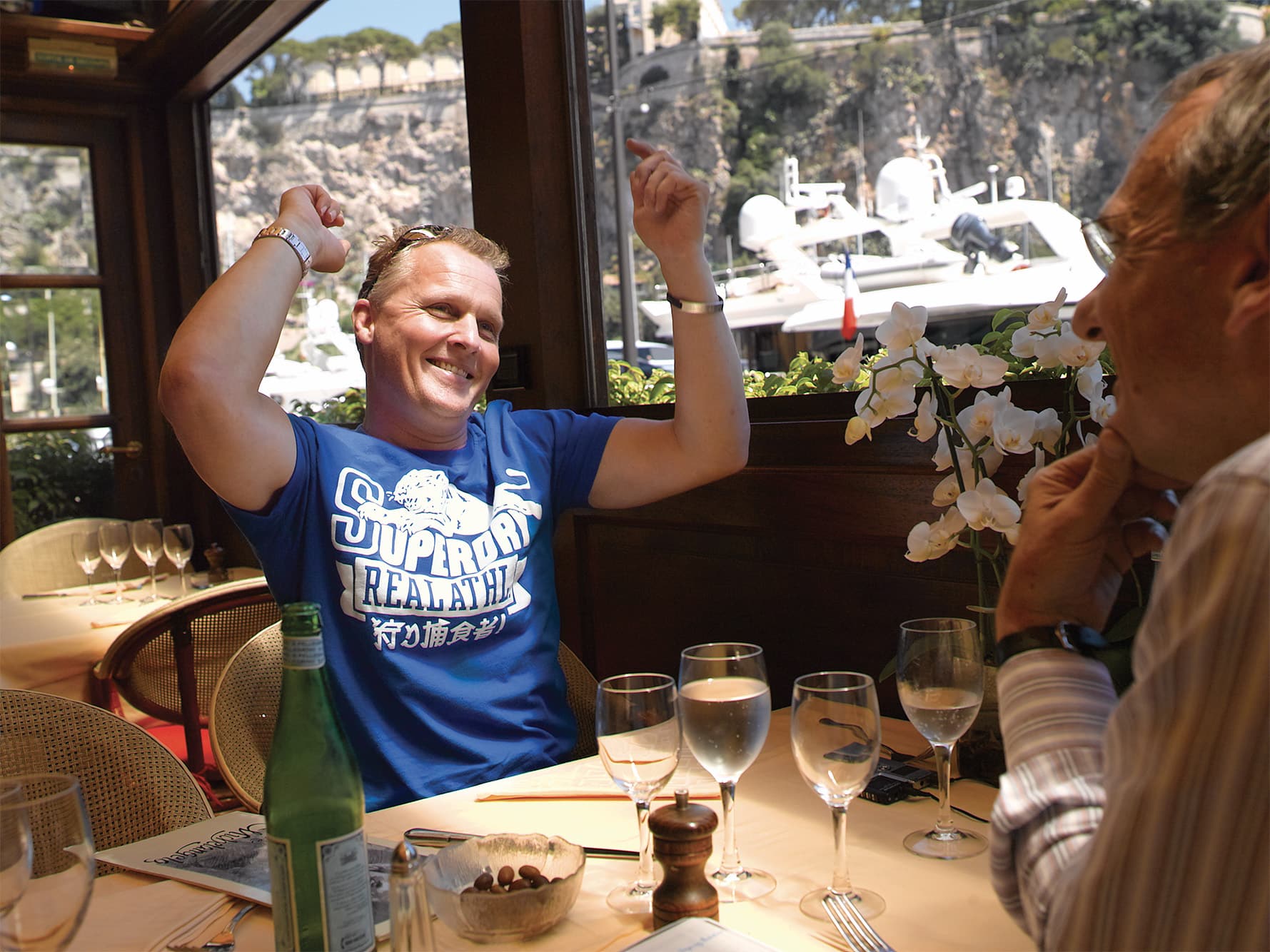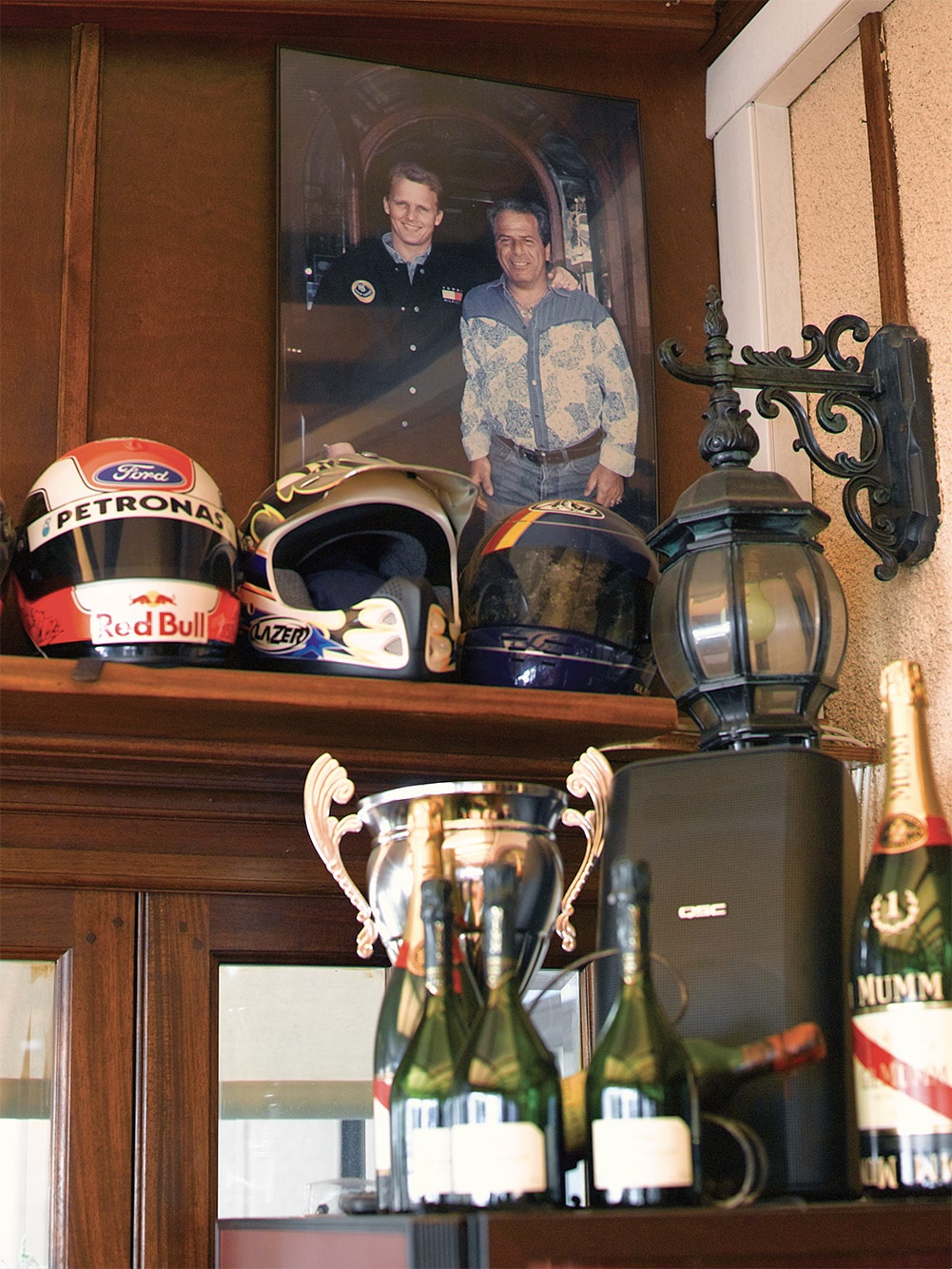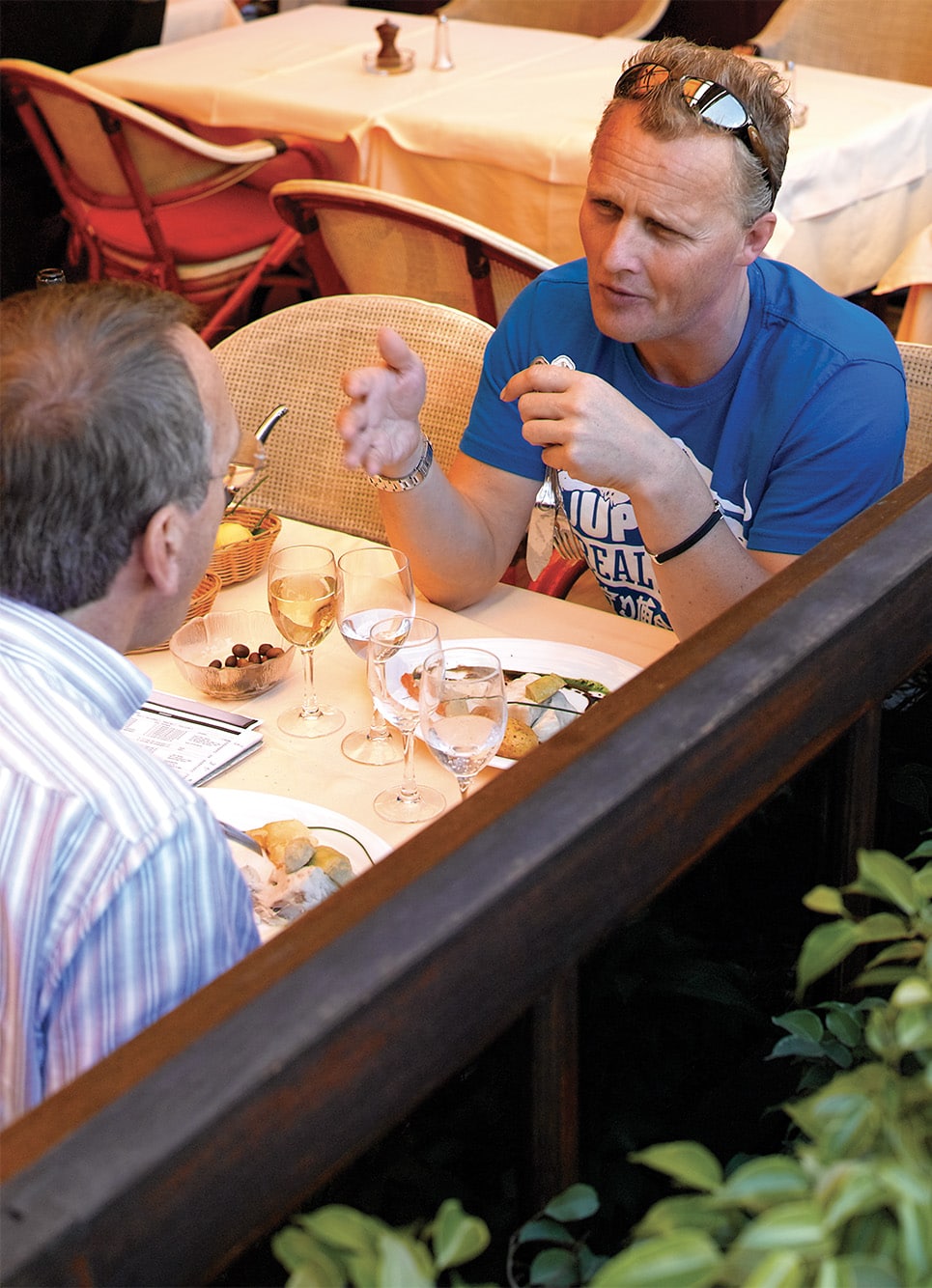“I remember what the crowd were like when I won the British Grand Prix. That was nice. But I had other things to think about. For the last 10 laps my legs were hurting so much I was screaming in the car, just screaming out loud. But it was the usual thing – I could never tell anyone about it. I just got through it, and kept it to myself after it was over. I never had a manager mainly because I didn’t think I could talk to anyone about what was really going on with my legs. I had to deal with it myself, it was down to me. I didn’t even talk to Becky about it.
“But it still never entered my head that I could hurt myself in a racing car, even though I’d done just that. It didn’t enter my head before my accident, and it still didn’t enter my head after. Well, I knew it could happen, because it had. But I didn’t have any concern about it.
“After the Silverstone win Flav gave me a quick hug, but it was all fake. He asked for my cap – the Goodyear winner’s cap that you got – and I gave it to him. Wish I hadn’t now. A couple of months later I won again, at Monza. The parc fermé used to be the other end of the pits from the podium. I was always awkward after a race, and it was an effort to walk all the way there and get up to the podium. Flavio greeted me with a dismissive ‘Hi,’ we did the trophy thing, and I didn’t see him after that. At the end of the year Michael and Ross left and went to Ferrari, but there was never any question of me staying. I didn’t want to stay anyway.”
So Johnny joined Sauber, and stayed for three seasons and 40 GPs. “What a contrast. I always felt they were behind me. A lovely group of people, and Peter Sauber is a great man. They achieved a hell of a lot considering where they were and what they had. Then in 1999 I went to Stewart, with Rubens [Barrichello].” Johnny fitted in well with Jackie’s team, but it wasn’t until September that it all came good, in the European Grand Prix at the Nürburgring. In a dry-wet-dry race, when all the fancied favourites hit trouble, Johnny read the conditions perfectly.
“You’ve got to keep looking at the weather in a race like that. Just before my first stop I was watching a threatening cloud coming straight at us. On the lap I was coming in for tyres, it started to spit around the back of the circuit, so I told them on the radio to get wets ready. It was my call, and it just worked out. Rubens came in two laps later, and he went for dries, which as it turned out was the wrong call. My wets got me through the wet part, and when I changed back to dries I was in second place. Then Fisichella put it off the road and I was in front. We weren’t the quickest car, but it just worked in our favour. Jackie was so happy when I won, it was lovely. He was three races from the end of running his own F1 team and he’d won a race – at the same track where he’d scored his last win as a driver, 26 years before.
“Actually, I always thought my next race, in Malaysia, was better. One of the best F1 races I ever did. My confidence was high after the win, and I qualified fifth and finished fourth. It was one of those rare times when everything felt right again, almost like before my accident. I felt at one with the car, that feeling of symmetry, and I found I could reel off very quick, consistent lap times.” He held off the McLaren of champion-elect Häkkinen until two laps from the end.
“It was a good time at Stewart. Of course Jackie would always tell his drivers how to drive, but he was only trying to help. It was just his way, and I never resented it. I found it amusing. In a Barcelona test he was watching on the long left-hander, where the car used to move around a bit if you were trying.” He switches into a high-pitched parody of Sir Jackie’s Scottish tones: “Johnny, you’re being aggrrrressive with the car, you want to be smooooth.” Peals of laughter. “Next time I went out I made sure I was smooth where he was watching, but I was probably two seconds slower that lap.”
At the end of the year Stewart became Jaguar, and it all started to go wrong. “Stewart had finished fourth in the Constructors’ and won a Grand Prix, and Jaguar talked big. The team nucleus after the takeover was the same, but the corporation around it kept changing – Wolfgang Reitzle, Neil Ressler, Bobby Rahal, Niki Lauda. But there never seemed to be anyone strong enough to manage it. The car didn’t handle well, and we had engine problems, something with the oil system, but they never got to the bottom of it. Everybody started protecting their own backs and you just knew that it was never going to work. I wasn’t enjoying it any more, and my results showed that. I wish I’d stopped at the end of ’99.”
The final indignity was when the Jaguar’s suspension broke in Johnny’s last GP in Malaysia, sending him crashing into the tyre barriers. He had to be stretchered away from the wreck. “I was carried to the cockpit for my first Grand Prix, and I was carried from the cockpit in my last.” Plans for a CART drive in 2001 came to naught, but he did some testing for Arrows, and drove the Champion Racing Audi at Le Mans and in the ALMS.
“It was wet at Le Mans that year. Between the second chicane and the kink, there was a river running across the road. During the night visibility was so bad I had to push myself up on the footrest and peer over the top of the screen at 200mph to see the white line down the middle of the road. But I’ve always enjoyed the wet. With karting you learn the basics very early on. Control in the wet, feeling it beneath you, that’s one of the basics.” That race ended in clutch failure, but in 2002 in a Joest Audi he finished second. “I think Le Mans is fantastic. The ACO have done a great job of maintaining its status as a classic. I now understand how to train for the race: it’s a package of things that you work towards, to cope with the time and the heat, how you rest, how you eat. Some F1 drivers don’t like it, but I don’t think it’s especially dangerous, if you’re up for the challenge of it. Trouble with F1 is, it’s in its own little bubble cocooned from everything else. It seems unaware that there’s a lot of other good racing going on.
“Doing Le Mans for Bentley was special. It was a gorgeous-looking car, and of course you thought of the Bentley Boys history at Le Mans. In 2003 one of the two cars had a trouble-free run and one had a few problems, like the battery kept going flat. I was in that one, with David Brabham and Mark Blundell, so we finished second two laps down. But that’s Le Mans. I was second again in 2004, in the Team Veloqx Audi, so I got second place three years running. And in 2007 I did it in an Aston Martin DBR9 – just about the first time I’d raced a front-engined car, apart from historic races in a Jaguar D-type. In the Aston everything was the opposite to what I was used to. You had to be very smooth. If you were clumsy with the throttle the front would move, but the back was always there.”
Most recently Johnny has campaigned big rumbling NASCAR-like stockers in Speedcar. The first series had 10 races in the Middle East and South-East Asia, with several ex-F1 drivers taking part, and Johnny won the title in the final round at Dubai. “The cars are raw and primitive: 600bhp V8s, H-box gearchange, big steering wheel, lots of noise. To start with it was carnage, wrecks everywhere. Soon people realised they weren’t going to earn any cash that way, and since then the racing has been bloody good. It’s lots of my old buddies – Jean Alesi, Stefan Johansson, JJ Lehto, Jacques Villeneuve. After the race we go out and have a good time. And if I thought it was hot in the Mazda at Le Mans, we’re often racing Speedcar in 34deg C, and all that sheet metal just sucks in the heat. It can get to 50deg C in there.”
Without the accident, would Johnny have been a World Champion? “I don’t know where I’d have got to. I think I would have done pretty well. All I can say is, before the crash, in my head I could be anybody I wanted to be, in any car, any conditions. As I won more races the feeling grew. I had the shunt, and I never had that feeling again. It was like someone got hold of it and, whoosh, it was gone. It never ever came back. Once or twice, like in Malaysia in the Stewart, I remembered what it was like, and it felt right. But that was very rare.
“I always say that in my next life I’ll do a swap with Michael [Schumacher]. He can have my career and I’ll have his.” The Herbert laugh again, and then: “But, looking back, it’s been a good career, really. Considering…”
